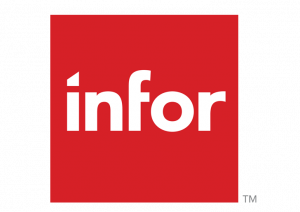Today in agencies nationwide, most government payroll, HR and workforce operations use decades-old software, which is costly and difficult to maintain.
“This use of legacy administrative tools makes it labor-intensive to manage the workforce and forces the focus of agencies to be on pushing through administrative processes,” said Laura Glass, Public Sector Industry Strategy Director at Infor.
In 2002, the federal government migrated 26 payroll systems to four, saving taxpayers more than $1 billion in a decade and allowing agencies to refocus efforts on frontline missions. Currently, four agencies are responsible for paying the federal workforce, and they have created dependable, consistent payroll services.
Still, the government’s outdated and costly IT infrastructure limits providers’ ability to adopt modern ways of business that drive improved efficiencies and outcomes. In fact, agencies rely on more than 100 systems to manage nearly 2.2 million employees, causing redundancy, confusion, extra costs and complexity.
Additionally, these systems store considerable amounts of sensitive taxpayer and government employee data that, because of legacy technology, is not as secure as it needs to be.
“The disparate technical systems that make payroll work, and that payroll feeds, have been strung together over the decades,” Glass said. “There hasn’t been a consolidated push to really fix all of the little Band-Aids that have been put on these systems over the last 40 years.”
Services such as payroll, travel and finance management cost more than $25 billion annually. By eliminating redundant contracts and technology among agencies, OMB estimates the government could save 5% to 30%.
Clearly, now is the time government needs to move past legacy solutions to best serve its employees and taxpayers.
Solution: Moving to Cloud-Based Tools and Modernization of Workforce Management
Most agencies are administering payroll and related functions on legacy systems. If they move those functions to the cloud, they can begin to focus on managing the workforce from a strategic perspective.
“By moving to cloud-based technology, we can leverage the scale of the federal government and enable agencies to focus resources on core mission priorities,” said Beth Angerman, then Deputy Associate Administrator at GSA’s Office of Shared Solutions and Performance Improvement, in a statement when GSA launched a new initiative to modernize pay systems. “This transformation will reduce long-term costs, improve user experience, allow for the most up-to-date approach to cybersecurity and help agencies better manage budgets.”
Today, government must procure and configure a cloud-enabled solution for payroll, work schedule and leave management, laying the foundation for shared HR functions governmentwide.
That’s where GSA’s NewPay comes into play. GSA is addressing aging and outdated payroll systems with NewPay — its first initiative as a Quality Service Management Office for civilian HR services.
“GSA is excited to deliver increased value to taxpayers and offer our partners in government a modern, efficient and effective approach to payroll through NewPay,” GSA Administrator Emily Murphy said. “Additionally, by utilizing [Software-as-a-Service] solutions, NewPay will continue to create ongoing value by empowering agencies to continue modernizing their systems.”
Glass said NewPay is an example of the role cloud can play. “Cloud is the most effective way to manage cost, scalability and security for payroll and workforce systems,” she said. “Cloud also positions the federal government to prepare for the next 10 to 20 years of serving citizens.”
Finally, using cloud-based solutions — especially solutions certified by the Federal Risk and Authorization Management Program (FedRAMP) — is more secure than keeping payroll and related functions on decades-old systems.
“The standardization that NewPay is going to bring to the marketplace is really going to make payroll processing and payroll operations much more efficient, and it’s going to allow for the integration to be much more meaningful,” Glass said.
This article is an excerpt from GovLoop’s recent report, “Modernizing Pay Management for Today’s Public Sector.” Download the full report here.






Leave a Reply
You must be logged in to post a comment.